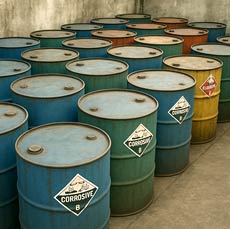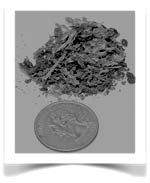Industrial facilities face a critical decision when managing wastewater: rely on third-party hauling services or invest in on-site treatment solutions. While hauling appears straightforward, this approach often carries substantial long-term costs and operational risks that many organizations underestimate.
Understanding the Full Scope of Hauling Expenses
 Waste hauling involves multiple cost components beyond basic transportation fees. Haulers charge based on volume (gallons, drums, or totes), with rates varying according to waste classification and transport distance. Even facilities generating moderate wastewater volumes can face significant annual expenses.
Waste hauling involves multiple cost components beyond basic transportation fees. Haulers charge based on volume (gallons, drums, or totes), with rates varying according to waste classification and transport distance. Even facilities generating moderate wastewater volumes can face significant annual expenses.
Standard hauling costs include minimum load fees regardless of pickup volume, fuel surcharges tied to volatile diesel prices, disposal fees that fluctuate based on waste classification, and premium charges for off-route pickups. These variable costs create budget uncertainty while leaving waste generators with no leverage to control expenses over time.
Hidden Costs and Operational Risks
Beyond direct charges, hauling creates several indirect costs that impact operational efficiency and risk exposure.
Under federal cradle-to-grave regulations, waste generators retain responsibility for their materials throughout the disposal process, even after transfer to hauling contractors. This ongoing liability exposure can result in substantial financial consequences if issues arise during transport or disposal.
Administrative requirements add operational overhead through detailed manifests, chain-of-custody documentation, and compliance records for each pickup. This paperwork demands staff time and creates potential regulatory compliance risks.
On-site storage presents additional challenges. Accumulating drums and totes consume valuable facility space while creating spill risks and environmental liability. Storage areas require regular inspection and maintenance, adding to operational workload.
On-Site Evaporation as a Strategic Alternative
Wastewater evaporation technology offers a fundamentally different approach. Standard systems typically reduce liquid waste volumes by approximately 90%, converting water content to clean vapor while concentrating remaining contaminants into manageable residue.
 This approach delivers measurable financial benefits. Operating costs become predictable and controllable, based primarily on energy consumption rather than external service pricing. Storage requirements decrease substantially, freeing facility space for productive use. Capital equipment investments frequently achieve payback within 24 months through operational savings.
This approach delivers measurable financial benefits. Operating costs become predictable and controllable, based primarily on energy consumption rather than external service pricing. Storage requirements decrease substantially, freeing facility space for productive use. Capital equipment investments frequently achieve payback within 24 months through operational savings.
Advanced systems like RunDry Evaporators achieve 100% water removal, eliminating liquid waste entirely. This eliminates ongoing hauling requirements while reducing liability exposure since no liquid materials leave the facility. Remaining oil-containing residues often qualify for no-cost collection by waste oil reclaimers, while dry, non-hazardous solids typically meet standard solid waste disposal criteria.
Operational and Strategic Advantages
On-site evaporation provides operational flexibility that hauling services cannot match. Facilities can schedule waste processing to align with production cycles rather than contractor availability, eliminating potential production delays caused by waste accumulation or service interruptions.
Environmental stewardship represents another strategic benefit. Organizations with sustainability commitments can demonstrate responsible waste management practices through source reduction rather than disposal, supporting broader environmental goals while potentially improving regulatory relationships.
Strategic Considerations
The choice between hauling and on-site treatment involves more than immediate cost comparisons. Hauling may appear cost-effective initially, but total lifecycle costs—including fees, surcharges, administrative burden, and ongoing liability—often exceed on-site treatment alternatives. Additionally, hauling provides no long-term cost control or operational independence.
On-site evaporation requires capital investment but delivers predictable operating costs, reduced regulatory exposure, and operational control. For facilities generating consistent wastewater volumes, this approach typically provides superior long-term value while supporting broader operational and environmental objectives.
